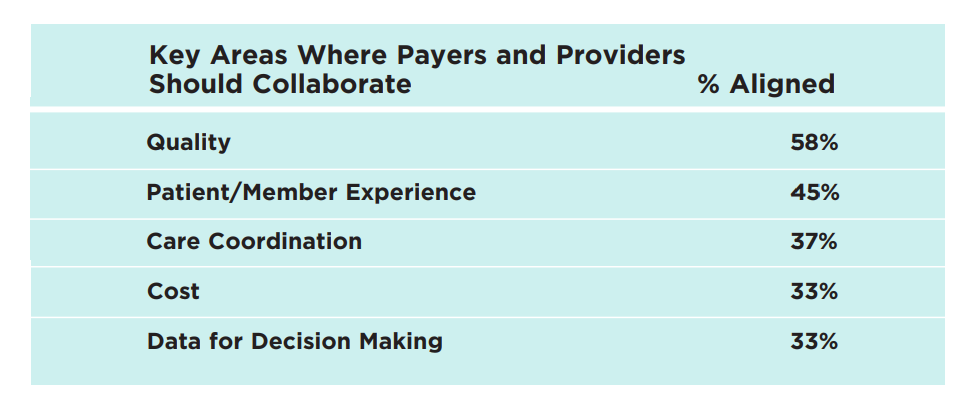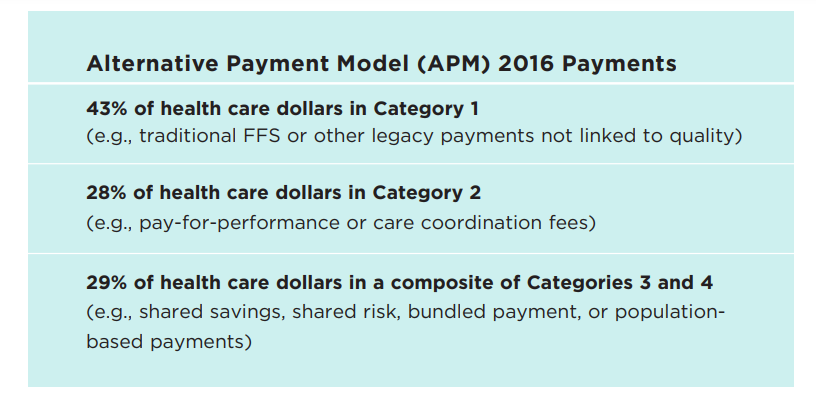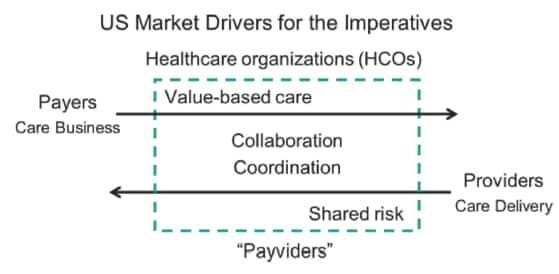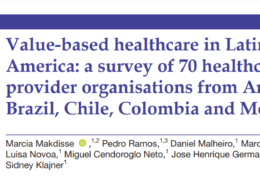This is a republication of the article below, with the title above, considering that the topic is applicable to the Health Care Industry Today, including the case of Brazil.
Republication
Joaquim Cardoso MSc.
The Health Revolution
Multidisciplinary Institute — for Better Health for All
June 2, 2022
Crossing the Payer-Provider Chasm: Getting to Shared Risk, Shared Data [classic article, 2018]
Intersystems
by Lynda Rowe
August 16, 2018
I recently read an article in New England Journal of Medicine (NEJM) Catalyst 1 that showed that the “alignment” between providers and payers does not seem to be closing, despite the industry shift to value-based payment.
The survey, conducted among executives, clinical leaders, and clinicians, finds that three-quarters (77%) of respondents do not consider payers and providers aligned toward realizing improved value in care delivery.
More than half (58%) feel their own organizations are not aligned.
Moreover, only three percent of respondents say payers and providers are extremely or very aligned at the industry level.
… the “alignment” between providers and payers does not seem to be closing, despite the industry shift to value-based payment.
According to this survey, this lack of alignment hampers integration of care and services and is a primary driver of our high healthcare costs.
According to this survey, this lack of alignment hampers integration of care and services and is a primary driver of our high healthcare costs.
The study highlighted key areas where payers and providers should be able to collaborate or align along with the percentage of respondents who thought there was alignment:

In some ways, I don’t find these results too surprising, given that there is still a lack of financial incentives between payers and providers.
Despite all the talk about the shift to value-based payment, just under 30 percent of all health care payments in the US are tied to alternative payment models (APMs). 2
This is a six percent increase over data collected the prior year — good progress, but lower than expected.
Despite all the talk about the shift to value-based payment, just under 30 percent of all health care payments in the US are tied to alternative payment models (APMs)
To look at the current data of APM adoption, the Healthcare Payment Learning and Action Network LAN APM Measurement Effort 3 determined the following results for 2016 payments:

As another NEJM Catalyst article recently stated, many providers find themselves with a foot in two canoes — a very challenging place for the industry.
As long as they continue to see consistent revenue in the fee-for-service model, there’s no burning platform for change.
… many providers find themselves with a foot in two canoes — a very challenging place for the industry.
As long as they continue to see consistent revenue in the fee-for-service model, there’s no burning platform for change.
However, herein lies the problem: if payers and providers are not aligned on the shift to shared risk and financial accountability, they also won’t be lined up to work together on quality, cost, and operational efficiency — that is, better care at a lower cost.
However, herein lies the problem: if payers and providers are not aligned on the shift to shared risk and financial accountability, they also won’t be lined up to work together on quality, cost, and operational efficiency — that is, better care at a lower cost.
To succeed, we need to close the gaps.
Many of the existing barriers stem from a history of misaligned goals and incentives and lack of transparency between organizations.
As noted above, payers and providers are least aligned on leveraging data to make better decisions for system improvements, and that’s a solvable problem.

Many of the existing barriers stem from a history of misaligned goals and incentives and lack of transparency between organizations.
As noted above, payers and providers are least aligned on leveraging data to make better decisions for system improvements, and that’s a solvable problem.
So what is the path forward to cross the chasm?
Based on current trends, value-based care — although moving slowly — appears to be part of the new fabric of healthcare.
As providers and payers continue to take on more shared risk, the alignment gaps will close.
To achieve the outcomes we want, payers and providers will need to show more transparency, which requires two-way data sharing.
To achieve the outcomes we want, payers and providers will need to show more transparency, which requires two-way data sharing.
My observation has been that, although barriers exist to providers sharing their data with payers, data needs to flow in both directions to get to a win-win scenario.
Payers can help their provider network perform better against quality, cost, and utilization measures by sharing that information.
Conversely, having access to clinical data will allow health plans to streamline some administrative processes such as pre-authorization and HEDIS/STARS reporting to drive cost and wasted time out of the system.
… although barriers exist to providers sharing their data with payers, data needs to flow in both directions to get to a win-win scenario. (1) Payers can help their provider network perform better against quality, cost, and utilization measures by sharing that information (2) … health plans can streamline some administrative processes such as pre-authorization and reporting to drive cost and wasted time out of the system.
We have heard from our forward-leaning customers that two-way data sharing leads to success.
The best outcome, however, will be better, more coordinated care for patients.
We have heard from our forward-leaning customers that two-way data sharing leads to success.
The best outcome, however, will be better, more coordinated care for patients.
Sources:
1 https://catalyst.nejm.org/new-marketplace-survey-payers-and-providers-remain-far-apart/
2 According to an October 30 report from the Health Care Payment Learning & Action Network — a public-private partnership launched by the US Department of Health and Human Services.
3 https://hcp-lan.org/groups/apm-fpt-work-products/apm-report/












